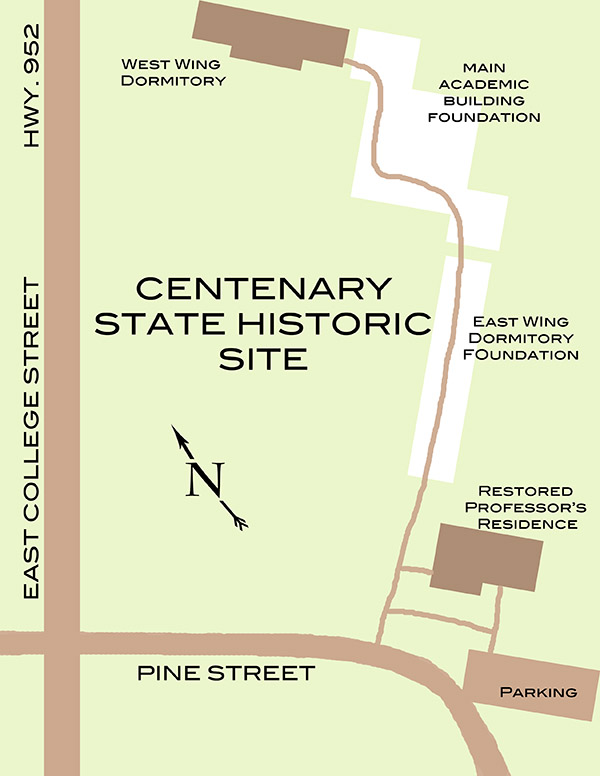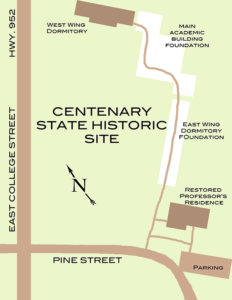Centenary State Historic Site
The Centenary State Historic Site was added to the National Register of Historic Places in 1979.

Courtesy of The Louisiana Endowment for the Humanities
Centenary State Historic Site Map. Mariano, Romy (Illustrator)
Centenary College was founded by the Methodists in 1839, the centenary year of Methodism. In 1845, the college relocated from its original location in Brandon Springs, Mississippi, to Jackson, Louisiana, in East Feliciana Parish, acquiring the property of the College of Louisiana. The latter, founded in 1825, had closed because of declining enrollment after occupying this site since 1830. Centenary flourished in its new location, adding a three-story academic building in 1857 to the two existing dormitories, one built in 1832 and the other in 1837, to house its three hundred students. The college closed during the Civil War, when its buildings were used by both Confederate and Union forces: as a convalescent hospital (Confederate) and for housing troops and supplies (Union). Although Centenary reopened afterward, it never regained its earlier enrollment and in 1908 relocated to Shreveport where it continues to operate. The academic building and one of the dormitory structures were demolished in the 1930s. When the state of Louisiana acquired the property, the surviving West Wing dormitory and a professor’s house, a wooden galleried structure from about 1837, were restored and reopened with exhibits on education in Louisiana.
The West Wing dormitory at Centenary in Jackson was built in 1837 by contractor Alexander Smith from Mississippi. Two stories high and one room deep, the brick structure has a two-story Tuscan gallery across its long south front and end walls. Exterior stairs at each end of the front gallery give access to the second floor. Both floors contain twelve rooms, and each room has a door, a front window, and two rear windows. After the college closed, the dormitory was adapted for different purposes, including a tuberculosis sanitarium, and low-income housing. Several rooms in the building, now restored and opened to the public, have been furnished as they were in the nineteenth century.
Adapted from Karen Kingsley’s Buildings of Louisiana, part of the Buildings of the United States series commissioned by the Society of Architectural Historians (www.sah.org) and published by Oxford University Press.
